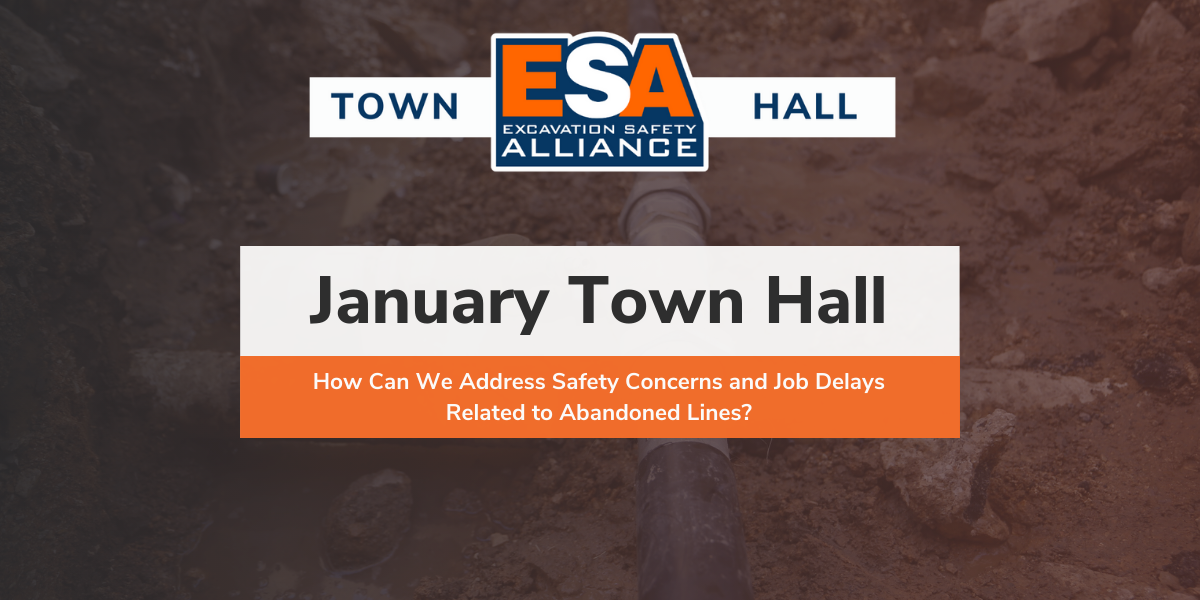
Hello Readers,
At our recent Town Hall, we delved into the critical issues related to abandoned utility lines. Concealed underground, these lines present risks ranging from safety hazards to job delays. Our discussion centered strategic approaches to effectively identify, manage, and mitigate the challenges posed by abandoned lines.
Our participants for this Town Hall included:
Moderator: Sandra Holmes, Executive Director, Arizona 811
Panelists:
Al Field, President, Al Field & Associates
Chris Stovall, President, Texas811 & Linescape
Kurt Youngs, Owner, Youngs Excavating
The panel dove into the complexity of identifying whether utility lines were active or abandoned, stressing the significance of communication as the cornerstone of safe digging practices. They delved into technologies used to assist with excavation work. One such example was the collaboration between Linescape and Kinder Morgan, which demonstrated how digital locates could enhance safety and efficiency. Other processes for handling unknown lines that have facilitated thousands of annual identifications were discussed. However, it wasn't just about the technologies or procedures in place; it was also about the pressing question of ownership and responsibility. Who is accountable for these abandoned lines?
The Town Hall discussion then grappled with legislative and practical challenges, emphasizing the need for better collaboration and improved data sharing. In terms of data sharing, a discussion concerning the creation of a centralized utility data repository brought to the forefront the strategic merits of such a system, despite the concerns over competitive advantage and/or homeland security.
The 180+ audience members was more active than we have ever seen them and submitted a variety of suggestions and insightful questions, such as these:
- If excavator confirms abandoned line, is it usually removed from the site or torn out as part of their work?
- Is the utility notified when their known abandoned utility is ripped out of the ground as part of excavation job there?
- Have we considered raising the standard of record keeping of underground utilities?
- When is new technology coming out? Backscatter x-ray or other technologies need to be explored.
- Regarding documentation, are projects not generally following the published ASCE guidelines that were updated sometime in the last two years? It seems to me information communication guidelines could be applied to abandoned lines as well.
Here is a brief recap of our participants takeaways:
Sandra Holmes:
Addressing abandoned lines is crucial; start small test areas with contractors and gain utility commitment to the identification process.
Chris Stovall:
Better data and more sharing. Improving datasets on abandoned facilities and standardized sharing are vital.
Kurt Youngs:
Start with new installations, maintain information until decommissioning, and collaborate with 811 to address abandoned lines over time.
Al Field:
Collect and utilize information, spread awareness, and collaborate to address this significant problem collectively.
Curious to see what was discussed in the chat? View the Chat Log.
Want to hear everything that was discussed by our panelists? View the full Town Hall.
Mark your calendars for our next Town Hall on February 8th, where we'll answer the question, How Can Private Locators Enhance Excavation Safety? Visit the Town Hall page to register.
Comments